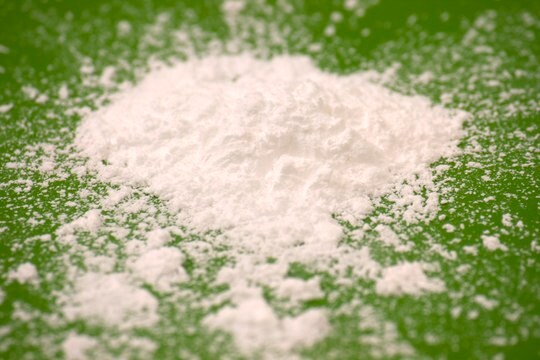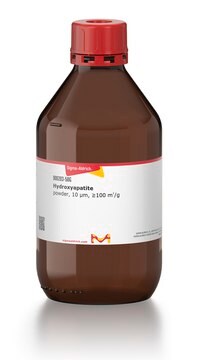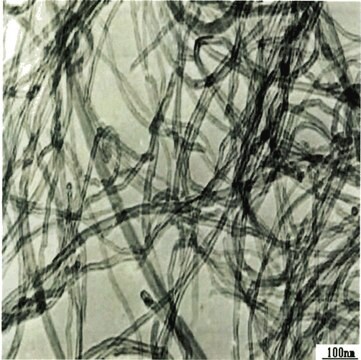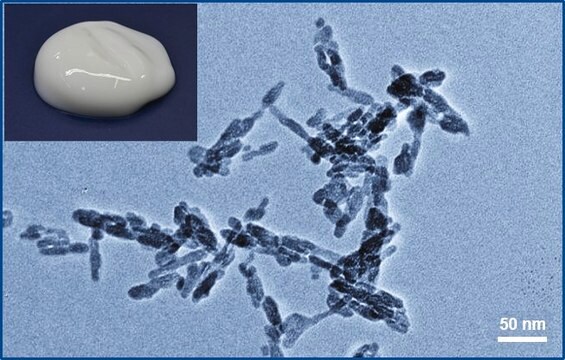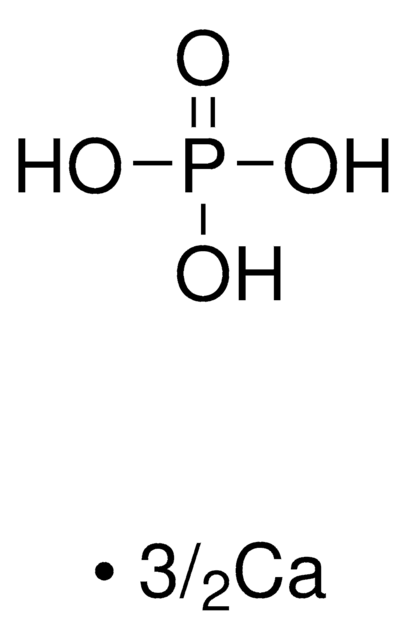702153
Hydroxyapatite
nanoparticles, dispersion, 10 wt. % in H2O, <200 nm particle size (BET)
Synonyme(s) :
Calcium hydroxide phosphate, Calcium hydroxylapatite, Calcium hydroxyphosphate, Nano hydroxyapatatite, Pentacalcium hydroxide triphosphate
About This Item
Produits recommandés
Forme
dispersion
nanoparticles
Niveau de qualité
Contient
≤0.025 wt. % dispersant (non-metal based)
Concentration
10 wt. % in H2O
Superficie
14.3 m2/g , typical
Taille des particules
<200 nm (BET)
pH
4-6
Densité
1.038 g/mL at 25 °C
Chaîne SMILES
[Ca++].[Ca++].[Ca++].[Ca++].O[Ca+].[O-]P([O-])([O-])=O.[O-]P([O-])([O-])=O.[O-]P([O-])([O-])=O
InChI
1S/5Ca.3H3O4P.H2O/c;;;;;3*1-5(2,3)4;/h;;;;;3*(H3,1,2,3,4);1H2/q5*+2;;;;/p-10
Clé InChI
XYJRXVWERLGGKC-UHFFFAOYSA-D
Vous recherchez des produits similaires ? Visite Guide de comparaison des produits
Description générale
Application
- An implant material for bone substitute due to its chemical similarity to the inorganic component of bone and osteo inductive properties.
- A vehicle for gene and drug delivery because of its encapsulation capacity and affinity to several drugs and proteins.
- A pH responsive particulate emulsifier.
Caractéristiques et avantages
- Biocompatible
- Osteoconductive
- Stable under physiological conditions
- High mechanical strength
Informations légales
Code de la classe de stockage
12 - Non Combustible Liquids
Classe de danger pour l'eau (WGK)
WGK 1
Point d'éclair (°F)
Not applicable
Point d'éclair (°C)
Not applicable
Faites votre choix parmi les versions les plus récentes :
Déjà en possession de ce produit ?
Retrouvez la documentation relative aux produits que vous avez récemment achetés dans la Bibliothèque de documents.
Les clients ont également consulté
Articles
Nanomaterials for Biomedical Applications
A key challenge for nanomaterial safety assessment is the ability to handle the large number of newly engineered nanomaterials (ENMs), including developing cost-effective methods that can be used for hazard screening.
Notre équipe de scientifiques dispose d'une expérience dans tous les secteurs de la recherche, notamment en sciences de la vie, science des matériaux, synthèse chimique, chromatographie, analyse et dans de nombreux autres domaines..
Contacter notre Service technique
